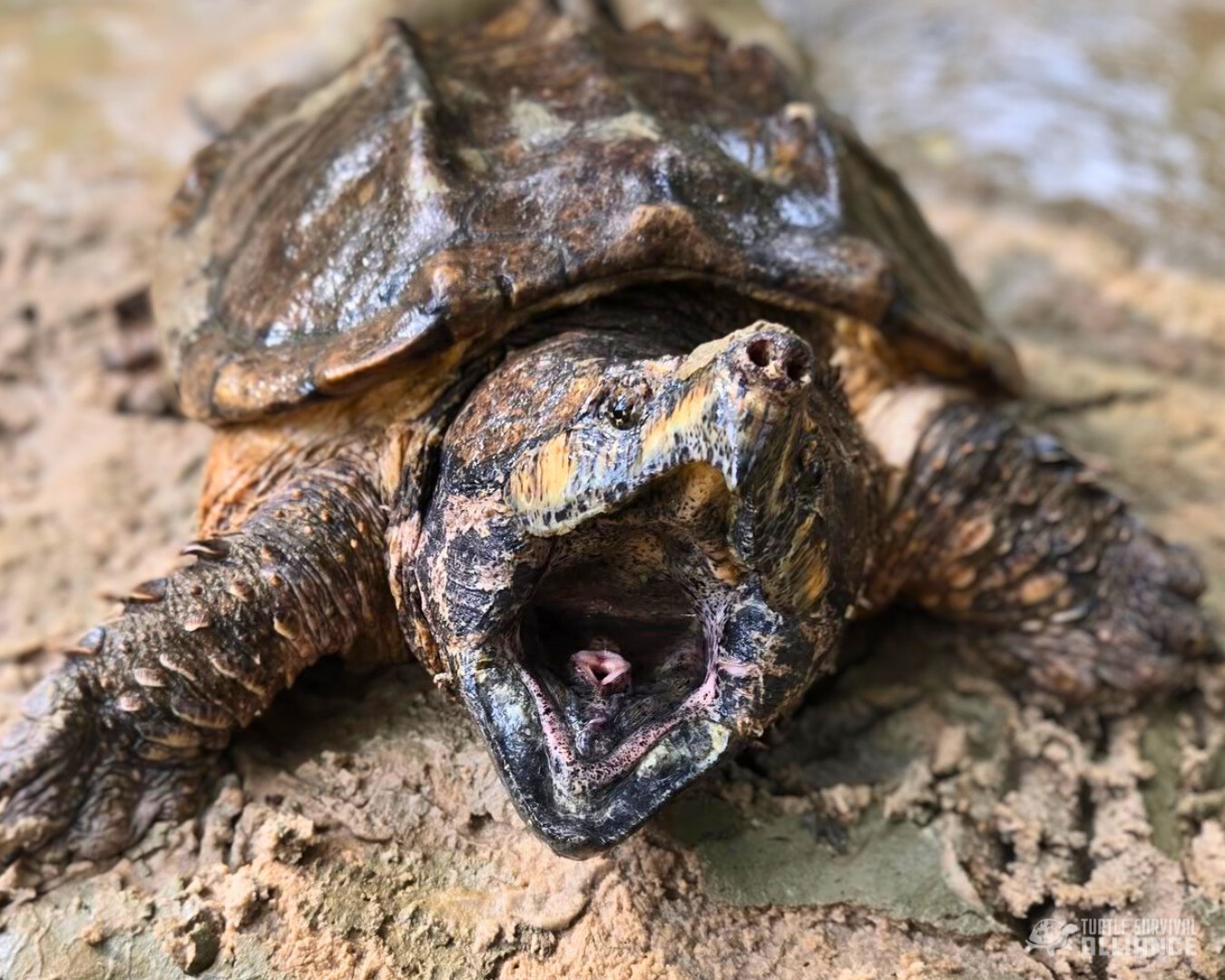- Turtles, specifically the Alligator Snapping Turtle, play crucial roles in ecosystem balance.
- Their dual role as predators and scavengers contributes to maintaining water quality and biodiversity.
- Population studies in Houston provide insights for effective conservation strategies for Alligator Snapping Turtles.
- The conservation status of the Alligator Snapping Turtle raises awareness of species at risk and the need for environmental stewardship.
- Engaging communities in conservation efforts is essential for the long-term survival of this species.
Turtles, particularly the Alligator Snapping Turtle (Macrochelys temminckii), serve vital functions within their ecosystems. This turtle is not only notable for its formidable appearance but also for its role in maintaining ecological balance. Many people recognize the Alligator Snapping Turtle’s fearsome jaws and unique hunting methods. However, its importance extends well beyond its predatory skills.
One of the key characteristics of the Alligator Snapping Turtle is its ambush predator behavior. It employs an ingenious technique by using a worm-like appendage on its tongue. This adaptation tricks potential prey, such as fish, into believing that they are approaching a harmless meal. Once the prey is close enough, the turtle swiftly snaps its jaws, securing the catch. This predation is crucial for controlling fish populations within waterways.
While it is widely regarded as an ambush predator, the Alligator Snapping Turtle also serves as a significant scavenger. It plays an essential role in cleaning up aquatic environments by consuming dead or decaying animals. This scavenging behavior not only helps to maintain water quality but also recycles nutrients back into the ecosystem. By breaking down organic matter, these turtles facilitate nutrient cycling, promoting the health of freshwater habitats.
Furthermore, the Alligator Snapping Turtle also contributes to controlling invasive species in its habitat. Non-native fish can disrupt local ecosystems, often outcompeting native species for resources. By preying on these invasive species, the Alligator Snapping Turtle aids in maintaining biodiversity. This role is especially important in regions like the Greater Houston Metropolitan area, where the balance of aquatic life is increasingly at risk.
In order to conserve this important species, population studies are actively conducted in various regions, including the Greater Houston area. Eric Munscher leads these long-term studies with a focus on gathering data about local Alligator Snapping Turtle populations. Recently, while capturing individuals at a smaller study site, researchers found three turtles that had previously been marked. This kind of data is crucial for understanding population dynamics and habitat requirements.
The insights gained from these studies inform conservation strategies aimed at ensuring the survival of the Alligator Snapping Turtle. Knowing the population numbers helps wildlife managers implement effective measures to protect this species and its habitat. Conservationists work on habitat restoration and community education initiatives to promote awareness of the significance of these turtles in ecosystems.
Currently, the Alligator Snapping Turtle is classified as Vulnerable on the IUCN Red List. This status indicates an increased risk of extinction in the wild. Awareness of this status is imperative for community engagement and funding for conservation initiatives. Many people may view turtles as charming creatures, but the loss of species like the Alligator Snapping Turtle could have far-reaching effects on freshwater ecosystems.
Engaging communities in conservation efforts is paramount. Various organizations work to educate the public about the importance of preserving the Alligator Snapping Turtle and its habitat. Hands-on programs often include community workshops, school visits, and citizen science projects. By involving the public, these initiatives foster a connection between people and their local wildlife.
Efforts to protect this turtle go beyond just academic research. Conservationists encourage sustainable practices that minimize human impact on waterways. Pollution, habitat destruction, and illegal hunting all pose serious threats to the Alligator Snapping Turtle. Education programs aimed at promoting responsible behaviors can make a significant difference in protecting these turtles.
Efforts continue to gather more data on the Alligator Snapping Turtle’s population trends and health. Ongoing research allows for better conservation tactics that adapt to changing environmental conditions. Such research is important for the turtles, as well as for the myriad of species that depend on the integrity of freshwater ecosystems.
Public parks and nature reserves play a vital role in conservation. They provide sanctuaries where turtles can thrive without the pressures of urban development. By preserving these areas, we protect not only the Alligator Snapping Turtle but also the entire ecosystem in which it resides. Continuous monitoring of these habitats is crucial to ensure they remain suitable for the turtles and other wildlife.
The ecological roles of turtles like the Alligator Snapping Turtle emphasize the integral connections within ecosystems. Each species has a function that supports the overall health of their environment. The disappearance of a keystone species can lead to a cascade of negative effects, disrupting the balance of nature. Protecting the Alligator Snapping Turtle is, therefore, essential for maintaining the health of freshwater ecosystems.
Many people may not realize how intertwined these turtles are with the health of waterways. They interact with various species and contribute to the intricate web of life. As predators, scavengers, and essential components of nutrient cycling, Alligator Snapping Turtles exhibit a complex relationship with their environment. Their presence signifies a robust ecosystem capable of sustaining diverse wildlife.
In summary, the Alligator Snapping Turtle plays a critical role in its ecosystem. Whether as an ambush predator or a scavenger, its activities significantly impact freshwater habitats. As ongoing studies in the Greater Houston Metropolitan area reveal more about this fascinating species, it becomes increasingly clear that concerted conservation efforts are imperative. By supporting research, community engagement, and habitat preservation, we can help secure a future for the Alligator Snapping Turtle and the ecosystems they inhabit.
*****
Source Description
Turtles aren’t just cool to look at—they play key roles in our ecosystems, and without them, we’d be out more than just a cute face.
The theme for today’s celebration is how turtles play key roles in their ecosystems. We’re taking a closer look at the Alligator Snapping Turtle (Macrochelys temminckii), a menacing-looking turtle that actually contributes to maintaining balance and biodiversity in freshwater habitats.
Most people know this turtle as an ambush predator that uses its large, sharp jaws and worm-like appendage on its tongue to lure unsuspecting prey into its mouth. But, it’s also a major scavenger, meaning it searches out and feeds on dead and decaying animals, keeping waterways clean and recycling nutrients back into the environment. This turtle also helps control populations of invasive species by preying on non-native fish, which can outcompete native species.
To support conservation of this species, we conduct long-term population studies on Alligator Snapping Turtles in the Greater Houston Metropolitan area, led by Eric Munscher. At one of the smaller study sites in Houston, Eric recently captured three turtles that had already been marked—meaning we had encountered and documented them before.
These studies grant us a bigger picture on the population of this species, allowing us to know and implement the best conservation strategies to keep this turtle thriving in the wild.
Pictured: Alligator Snapping Turtle (Macrochelys temminckii)
IUCN Red List Status: Vulnerable
📸: Eric Munscher
@parcconserve


